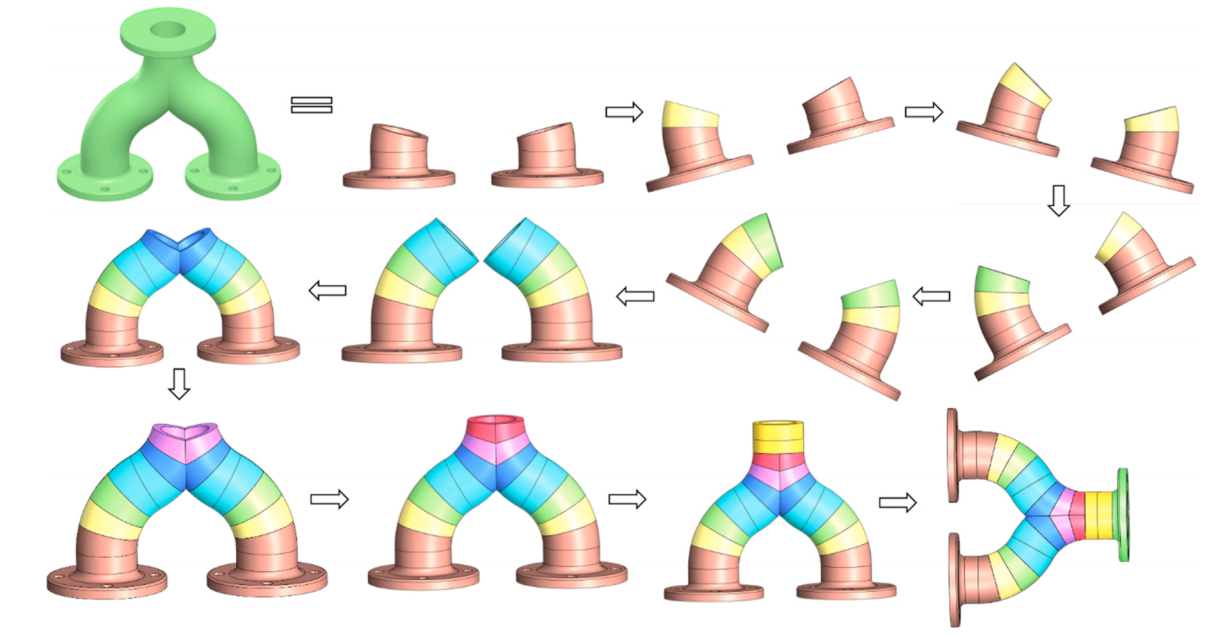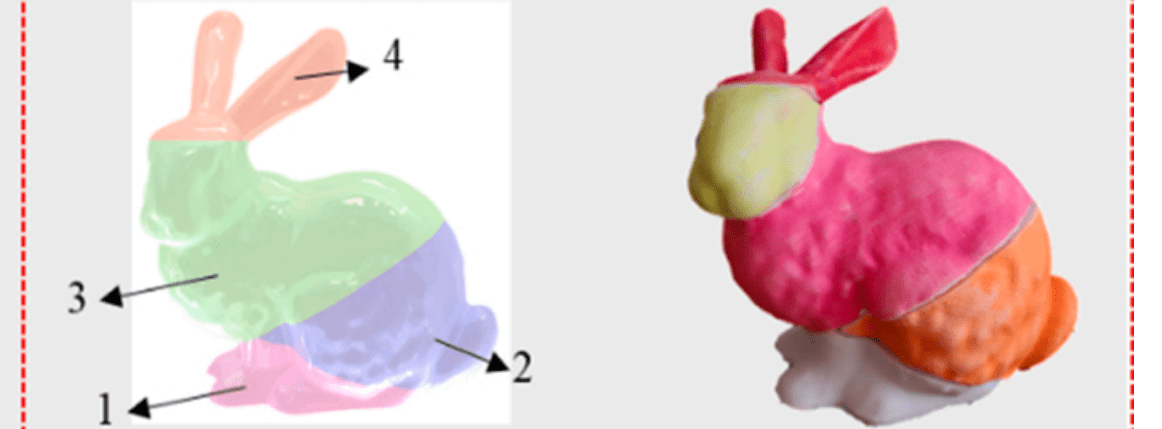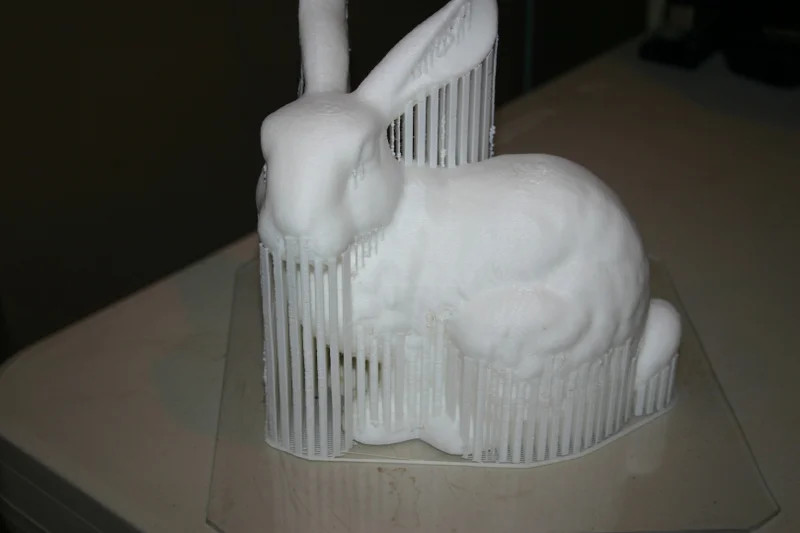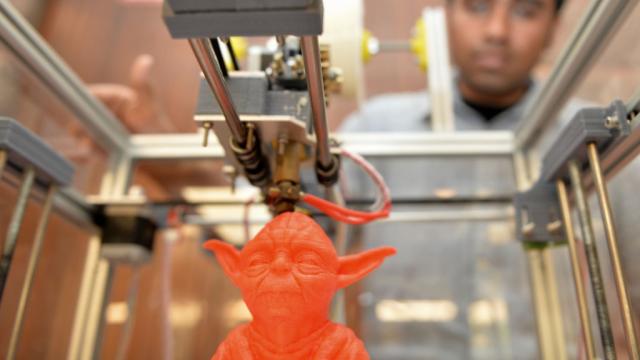Two researchers at Penn State have created a new system for five-axis additive 3D-printing that reduces the amount and density of support materials needed for making printed objects.
In a paper entitled “Process planning for five-axis support free additive manufacturing,” doctoral candidates Xinyi Xiaoa and Sanjay Joshi proposed using a 3D printer with a movable build plate or extrusion arm to turn objects in 3D space as they’re printed, thereby making every surface “flat” as its being extruded.
Normal additive 3D printing starts with the bottom of an object and adds layers as it prints. When objects are bigger on the top than the base or overhang over the main base — imagine tree branches overhanging a trunk — traditional printers add support material that is removed and thrown away.
“Removal of the support structures is costly and time-consuming, especially for metal parts,” wrote the researchers.

In other words, this is 3D printing squared, with another axis added to the printer in order to maximise the process as the object grows.
The researcher’s project focuses on a new predictive model for print preparation that makes it far faster to prepare objects for printing on a five-axis 3D printer.
“Using a five-axis deposition machine has the potential to build structures without the need for supports,” the researchers wrote. “However, there is a lack of automated process planning software to support the full use of five-axis machines. [We introduce] an automated method that allows reorienting the part during the build using a five-axis machine.”
The process cuts objects into separate pieces that must be printed on a different axis. In the image below, for example, the system cut the rabbit into four pieces with the feet at one axis, the overhanging tail and body at another, and the ears at still another axis.

When you use a regular 3D printer — as shown in this Instructables article — the support material nearly covers the entire rabbit and some of it is difficult to remove. With the new process, you can reduce or remove support material entirely.

“Large metal components, using traditional additive manufacturing, can take days and waste lots of materials by using support structures,” said the creators. “Additive manufacturing is very powerful, and it can make a lot of things due to its flexibility; however, it also has its disadvantages. There is still more work to do.”
There aren’t many 5-axis printers available and none for home use, but if this means I’ll be able to 3D print my Razor Crest without five pounds of plastic waste, I’m in.
